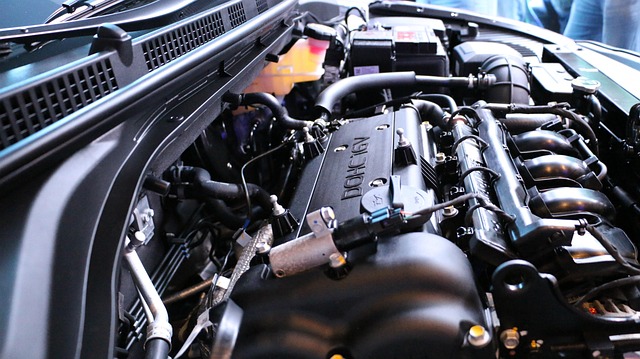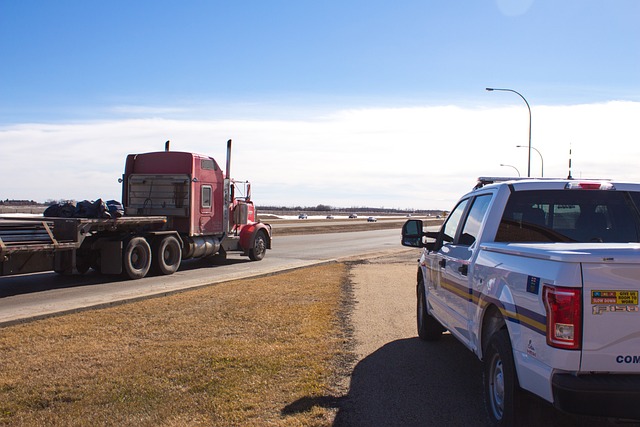Looking to register your car in California? This comprehensive guide will walk you through the process step-by-step. From understanding key requirements like vehicle eligibility and necessary documents, to visiting your local DMV, verifying your Vehicle Identification Number (VIN) using a trusted VIN verifier, and paying registration fees—we’ve got you covered. Ensure a smooth experience with these essential tips, making your car registration a breeze.
- Understand California Car Registration Requirements
- Gather Necessary Documents for Registration
- Visit Your Local DMV and Complete Application
- Verify Vehicle Identification Number (VIN) Accuracy
- Pay Registration Fees and Receive Your Plate
Understand California Car Registration Requirements

Before registering your car in California, it’s crucial to understand the state’s specific requirements. The California Department of Motor Vehicles (DMV) mandates that all vehicles operated within the state be properly registered and bear a valid car registration sticker. One essential step is to ensure a accurate Vehicle Identification Number (VIN) verification. Utilize a trusted mobile vin verifier or conduct a vin inspection to cross-reference the VIN with reliable databases, confirming its authenticity and history. This process plays a vital role in preventing fraud and ensuring compliance with California’s regulations.
Additionally, you’ll need to provide necessary documentation, such as proof of ownership (often through a signed title transfer), current insurance documents, and possibly, if applicable, a smog certificate or emissions test report. The DMV vin verifier can guide you throughout this process, making sure all details match and your vehicle meets the state’s safety and environmental standards.
Gather Necessary Documents for Registration

Before you begin the registration process, ensure you have all the required documents to make the task smoother and faster. The California Department of Motor Vehicles (DMV) requires specific paperwork for car registration, including proof of ownership, which is typically a vehicle title or a bill of sale, and valid identification for both you and your vehicle. Additionally, you’ll need a current auto insurance policy and a DMV form 137 (Application for Title/Registration).
A crucial step in the preparation process is obtaining a valid Vehicle Identification Number (VIN) verifier. This can be done through various methods, including using a mobile VIN verification service or visiting a local shop to conduct a mobile VIN inspection. The DMV recommends utilizing a trusted and certified VIN verifier to ensure accuracy, as this unique 17-character code is essential for verifying your vehicle’s history and authenticity, especially when transferring ownership.
Visit Your Local DMV and Complete Application

Visit your local DMV office or, for added convenience, utilize their online services to initiate the registration process. You’ll need to complete an application form, providing essential details about your vehicle, including its make, model, year, and unique Vehicle Identification Number (VIN). The VIN is a crucial piece of information that allows the DMV to verify the vehicle’s history and ensure it complies with all necessary regulations.
A mobile VIN inspection or verification service might be worth considering if you prefer not to visit a physical location. These services send a specialist to your location, who will check the VIN and other details against various databases to confirm the vehicle’s authenticity and condition, making the registration process even smoother.
Verify Vehicle Identification Number (VIN) Accuracy

Before registering your car in California, it’s crucial to ensure the Vehicle Identification Number (VIN) is accurate and valid. This unique 17-character code is a critical component of your vehicle’s history and safety features. To verify the VIN, many Californians opt for a mobile vin inspection or use an online dmv vin verifier to confirm its authenticity.
Accurate VIN information ensures that you’re getting what you pay for—a safe, legal, and properly documented vehicle. A simple vin inspection can reveal valuable details about your car’s past, including ownership history, accident reports, and outstanding issues, which are all essential factors in the registration process.
Pay Registration Fees and Receive Your Plate

After verifying your vehicle’s information through a DMV VIN verifier or using a mobile VIN verification service to ensure all details are accurate and up-to-date, it’s time to pay the registration fees. California has specific requirements for registration costs, which vary based on the type of vehicle and its age. You can typically make payments online or at your local DMV office using various payment methods like credit cards or checks. Once your fees are processed, you’ll receive your official car registration and license plate. This crucial step completes the registration process, allowing you to legally operate your vehicle on California roads.
Ensure a smooth transition by keeping accurate records of all transactions and documents related to your vehicle’s registration and mobile VIN inspection. Promptly displaying your license plate as required by law is essential, enhancing road safety and facilitating efficient vehicle identification.
Registering a car in California involves understanding state requirements, gathering essential documents, and completing an application at your local DMV. Accurately verifying the Vehicle Identification Number (VIN) is crucial, as is paying the necessary registration fees to receive your plates. Using a trusted DMV VIN verifier can streamline this process, ensuring you meet all standards efficiently.
